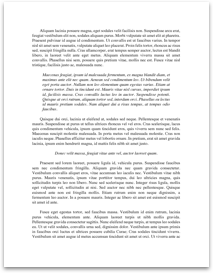Acc 492 Final Exam Answers
Submitted by: Submitted by louisechan
Views: 10
Words: 1819
Pages: 8
Category: US History
Date Submitted: 08/25/2015 02:47 AM
ACC 492 Final Exam Answers
http://www.homework-bank.com/downloads/acc-492-final-exam-answers/
For Any Information or Any Class Which you did not find on Our Website, Just Hit US Email On below address
Email Address: hworkbank@gmail.com
Visit Our Website: http://www.homework-bank.com/
ACC 492 Final Exam Answers
1) The bonding of employees will normally be expected to:
A. “weed out” dishonest employees already hired.
B. serve as a deterrent to dishonesty.
C. guarantee that all employee fraud will be prevented.
D. eliminate the need for separation of duties in the cash receipts area.
2) All sales, cash receipts, and sales adjustments are accurately valued using GAPP and correctly journalized, summarized, and posted. These actions are transaction objectives for:
A. occurance
B. cutoff
C. accurancy
D. completeness
3) Disclosure objectives include all of the following EXCEPT:
A. occurrence and rights and obligations
B. classification and understandability
C. completeness
D. cutoff
4) The extent of the auditor’s inventory test count would LEAST depend on which of the following?
A. The nature and composition of the inventory.
B. The existence of inventory at multiple locations.
C. The effectiveness of controls pertaining to maintenance of perpetual records.
D. The care exercised by client employees in taking the inventory.
5) When statistical sampling methods are used by the client in determining inventories, professional standards require that the auditor ascertain the following EXCEPT that the:
A. sampling plan has statistical validity.
B. appropriate tests of transactions have been applied.
C. results in terms of reliability are reasonable.
D. sampling plan has been properly applied.
6) The auditor’s strategy in performing test counts during the inventory observation is to:
A. concentrate tests on high dollar items and take a representative sample of other items.
B. concentrate tests in areas where employees seem...
More like this
- Mgmt591 Wk 8 Final Exam Answers
- Acc 401 Final Exam
- Acc 410 Complete Class All Quizzes, Homework Chapters, Questions For Review And Discussion, Midterm And Final Exams & Assignments
- Http: //Strtutorials.Com/Acc-410-Wk-11-Final-Exam-Part-1-Part-2-All
- Acc 565 Wk 11 Final Exam
- Acc 350 Wk 11 Final Exam
- Acc 317 Wk 11 Final Exam - All Possible Questions
- Acc Final Exam
- Final Exam Eco 372
- Final Exam
